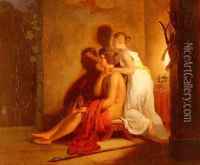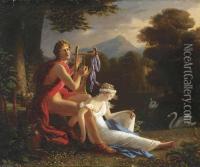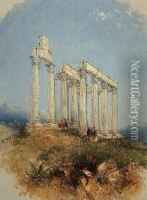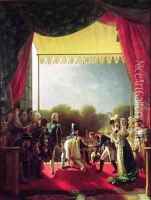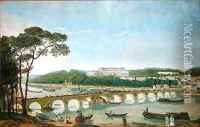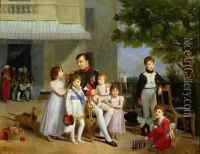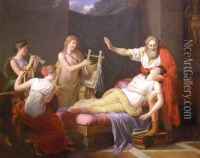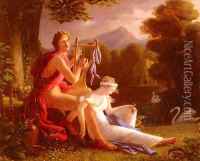Louis Ducis Paintings
Louis Ducis was a French painter born on February 22, 1775, in Versailles, France. Coming into the world just before the French Revolution, Ducis's career was shaped amidst a period of significant political and social upheaval. He is primarily known for his historical and mythological scenes, which were influenced by the turbulent times he lived in as well as the prevailing Neoclassical style of the era.
Ducis received his artistic training under the guidance of Jacques-Louis David, the leading French painter of the Neoclassical movement. Under David's tutelage, Ducis honed his skills and developed a keen eye for the classical ideals of beauty and harmony. His association with David not only influenced his stylistic orientation but also helped him gain entry into the prestigious art circles of Paris.
Despite the overshadowing fame of his mentor, Ducis managed to carve out a niche for himself with his unique interpretation of historical and mythological subjects. He exhibited at the Paris Salon, the official art exhibition of the Académie des Beaux-Arts in Paris, where his works were met with acclaim. His paintings are characterized by their detailed execution, dramatic intensity, and emotional depth, qualities that resonated well with the Romantic sensibilities that started to emerge towards the latter part of his career.
Throughout his life, Louis Ducis remained a dedicated artist, contributing to the French art scene through both his creations and his role as a mentor to younger artists. Though not as widely remembered as some of his contemporaries, his works continue to be appreciated for their contribution to the transition between Neoclassicism and Romanticism.
Louis Ducis passed away on September 18, 1847, in Le Havre, France. His legacy is preserved in various museums and collections, where his paintings serve as a testament to the enduring appeal of classical subjects rendered with emotional depth and technical skill.
